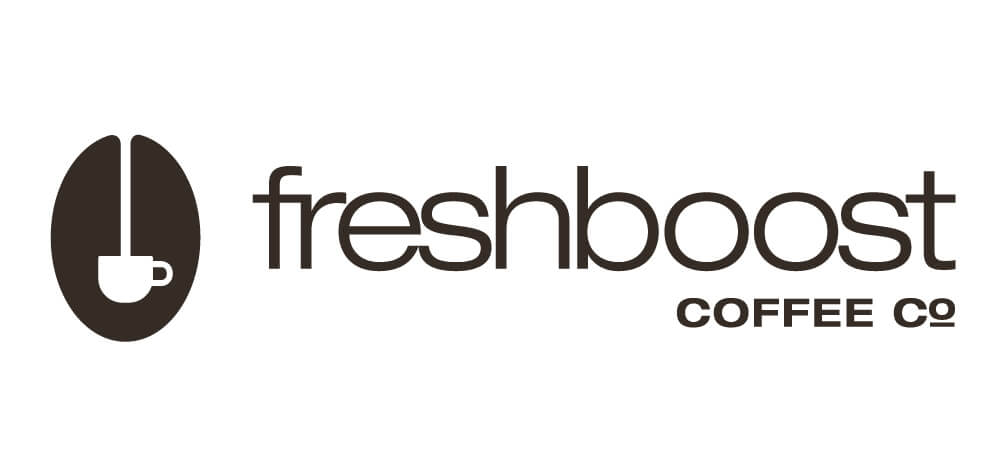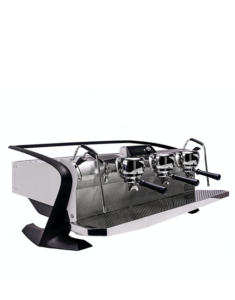Office Coffee Beans: A Deep Dive into What to Choose and Why
Picture this: It’s Monday morning, and you’re about to take A Deep Dive into the World of Office Coffee Beans: What to Choose and Why. You stand before your office coffee machine, bleary-eyed but hopeful.
The aroma of freshly brewed coffee fills the air as you ponder – Arabica or Robusta? Light roast or dark?
Perhaps it’s time for a change from that stale old blend. After all, who said office brews have to be dull? Certainly not us.
A world of flavours awaits in every bag of beans. Let’s navigate together through A Deep Dive into the World of Office Coffee Beans: What to Choose and Why.
Table of Contents:
- Understanding Coffee Beans and Flavor Profiles
- Exploring Roast Levels and Flavor Profiles
- The Role of Roast Levels in Coffee Flavor
- Choosing the Right Coffee for Your Office: The Ultimate Guide
- Different Types of Coffee Drinks for Offices: The Complete Guide
- The Impact of Grind Size on Extraction and Taste
- Cracking the Code to Quality Office Coffee Beans: Your Ultimate Guide
- FAQs in Relation to A Deep Dive Into the World of office Coffee Beans: What to Choose and Why
- Conclusion
Understanding Coffee Beans and Flavor Profiles
So, you’re keen to learn about coffee beans? Great. We’ve got two major players in the game: Arabica and Robusta. Each of these bean types brings something unique to your cup.
Exploring Arabica Beans
Arabica coffee, it’s a bit of a big deal. Why? Because it accounts for 60-70% of all coffee produced globally. That’s massive.
The key characteristics that make Arabica beans so popular are their sweeter taste profile and less acidic nature. In other words, they’re smooth operators.
Unpacking Robusta Beans
Moving onto our second player – the bold and beautiful Robusta beans. These guys pack quite a punch with their strong flavor profile coupled with high caffeine levels.
You know when you walk into an office, and there’s this rich aroma filling up space? That’s probably robusta working its magic.
Exploring Roast Levels and Flavor Profiles
Ready for more exciting stuff about your favourite brews? Let’s shift gears from bean types to another crucial factor influencing your daily dose of caffeine – roast levels. Stick around as we explore how different roasts can impact the flavour profiles in our next section.
The Role of Roast Levels in Coffee Flavor
Alright, let’s have a chat about how roast levels shape the taste of your office coffee. You see, it’s a spectrum that stretches from light to dark roasts – each with unique traits that impact your brew.
We’ve got light roasts on one end and dark roasts on the other. Light roasted coffee usually gives you a more acidic cuppa, retaining many of the original flavours of the beans. On the flip side, darker roasts have less acidity but bring forth robust flavours that we often find in traditional espresso drinks.
Now here’s an interesting bit: only around 30% maximum solubility is possible when the beans are ground up and mixed with water. This means that the flavour extraction from those roasted beans during brewing heavily relies on this factor.
Middle Ground: Medium Roasted Coffee?
If you’re after something balanced between sharpness and boldness – medium roast might just hit the spot for workplace coffees. It offers complexity without leaning too much towards either end of the flavour scale.
But remember, mates; every palate is different. What seems like the perfect balance to some may feel too mild or strong for others in the team. So choosing based purely on the ‘roast’ can be quite tricky sometimes.
So there we have it – understanding how different levels influence our favourite cuppa’s flavour profile paves the way for the next crucial part – picking the right blend that caters to diverse tastes at work.
Choosing the Right Coffee for Your Office: The Ultimate Guide
Before we delve into the art of selecting coffee blends, let’s take a moment to consider what it entails. It’s not just about choosing any blend but finding one that satisfies all coffee drinkers in your office.
I’ve created this unique 4-step guide to help you navigate through:
Step #1: Understand your Brewing Method. Some coffees are better suited to certain brewing methods than others. For instance, espresso machines may extract more flavour from dark roasts while pour-over methods might highlight the subtleties of light roasts.
Step #2: Cater to both those who prefer their coffee strong and those with a sweeter taste preference. Remember recipes with lower yields result in a stronger cup, whereas extracting more leads to a sweeter yet less robust brew.
Step #3: Pay attention to Caffeine Content. Not everyone wants high caffeine levels – some might opt for milder options or even decaf varieties during the day.
The Final Step #4: Make use of resources available such as how-to guides on picking suitable blends for diverse palates within an office setting.
This isn’t rocket science; however, getting it right can have massive impacts on productivity and overall workplace satisfaction.
In our next segment, let’s explore different types of popular coffees found at offices like espressos and black coffees.
Different Types of Coffee Drinks for Offices: The Complete Guide
Picture a bustling office, alive with energy and productivity, fueled by one common factor – good old caffeine.
We’ve crafted a unique 3-step framework to help you navigate the popular choices found in workplaces across Australia.
Let’s break it down:
Brew #1: Espresso machines are more than just fancy equipment; they’re versatile workhorses that can deliver everything from robust espressos to creamy lattes and cappuccinos right at your desk.
Brew #2: Embrace simplicity with black coffee. It’s straightforward, unadulterated, and allows you to truly appreciate the pure taste experience where quality beans shine through.
Brew #3: For those who prefer their cuppa without the caffeine kick, decaf coffee provides all the comfort without any sleep disruption. It’s an ideal choice for an afternoon pick-me-up or late-night sipping sessions during crunch times.
Inspired by your favorite brews from local coffee shops?
Don’t worry. You can recreate these beverages within your workplace, promoting productivity by reducing the need for trips outside.
However, crafting these drinks to perfection requires more than just a passing glance. Understanding how grind size affects extraction rates can lead to varying strength and flavors in your cup.
Stay tuned as we dive deeper into this fascinating aspect next.
The Impact of Grind Size on Extraction and Taste
Grinding your coffee beans is not just about turning whole beans into a usable form. It’s an art that can significantly influence the taste of your brew.
You see, grind size has a massive effect on extraction rates, which in turn impacts strength and flavour. How so? Let me break it down for you:
Fine Grinds: These are like tiny particles with more surface area exposed to hot water. This means faster extraction, but beware. If too fine, you might end up over-extracting, leading to bitter notes in your cuppa.
Coarse Grinds: These big chunks expose less surface area, slowing down extraction rates. But again, if too coarse – hello under-extracted coffee tasting sour or acidic.
A Bit About Coffee Extraction
Coffee extraction is all about dissolving those desirable flavours from ground beans into hot water. Achieving balance here is key because remember: Not all compounds extract at equal speeds. That’s why adjusting grind size becomes critical for achieving balanced flavour profiles.
Your Cuppa Joe Influenced By Grind Size
The brewing method also affects how you should be grinding your beans, as different methods require varying levels of fineness or coarseness for optimal results.
In espresso machines where pressure forces hot water rapidly through compacted grounds, very fine grinds are required, whereas slower brewing techniques like French press prefer coarser grinds.
So next time when whipping up a fresh brew, remember this – tweaking grinder settings isn’t trivial business, mate; it profoundly impacts both the rate of extraction and consequently the overall taste profile.
Now let’s switch gears and chat about sourcing top-notch office coffees online or offline, ensuring every roast is as fresh as morning dew.
Grinding your coffee beans isn’t just a job, it’s an art form. The size of the grind influences extraction rates and therefore taste. Too fine and you risk bitterness; too coarse and you might end up with sour notes. The brewing method also plays its part – espresso machines need finer grinds, while slower methods like French press prefer coarser ones.
Cracking the Code to Quality Office Coffee Beans: Your Ultimate Guide
No need to search any further if you’re after the best office coffee beans. I’ve got some hot tips on where to find premium quality coffees both online and offline.
I’ll guide you through this three-step framework:
Step #1: Get acquainted with your local coffee shops. They often stock freshly roasted beans that could give your office brew an upgrade.
Step #2: If you prefer convenience, order online. Many reputable suppliers offer nationwide delivery of fresh roasts every time right at your doorstep.
Step #3: Ace storage. Once you get those deliciously aromatic beans in-house, proper storage is key to maintaining their freshness and taste over time. Consider investing in airtight containers kept away from direct sunlight and heat sources.
Familiarise yourself with these steps, make them part of your routine and voila – top-quality office coffee becomes second nature.
Pumped up about diving deeper into the world of gourmet coffee?Catch more tips on our blog here.
Now let’s spill the secret sauce behind each step:
Sourcing locally: The charm lies not just in supporting small businesses but also enjoying unique blends crafted by artisanal roasters.
The online advantage: Not only does it save precious hours spent sourcing physically but can also bring globally acclaimed brands within reach.
The end game? Ensuring every cuppa served at work offers a sensory experience that boosts morale while pleasing palates.
FAQs in Relation to A Deep Dive Into the World of office Coffee Beans: What to Choose and Why
How do I choose coffee beans?
Pick your beans based on the flavour profile you prefer. Consider factors like the type of bean, roast level, and grind size. Also, take a look at where they’re sourced from.
What part of the world has the best coffee beans?
Coffee quality is subjective, but countries like Ethiopia, Colombia, and Brazil are renowned for producing high-quality beans.
What is considered the best tasting coffee in the world?
The ‘best’ taste varies according to personal preference. However, Kopi Luwak from Indonesia and Black Ivory from Thailand are often cited as premium coffees due to their unique production process.
What is the most demanded coffee in the world?
In terms of demand volume, Arabica holds sway globally thanks to its balanced flavour and lower acidity compared to other types such as Robusta or Liberica.
Conclusion
Diving deep into the world of office coffee beans, we’ve explored the unique flavours and characteristics of different bean types. Arabica with its sweeter notes, Robusta for a strong caffeine kick.
We’ve seen how roast levels play a key role in shaping your cuppa’s taste. Light or dark – it all boils down to personal preference.
Choosing the right blend for an office environment is more art than science. It’s about catering to diverse tastes while considering brewing methods and caffeine content.
From espressos to black coffees, offices today boast a variety of popular brews. The grind size plays a critical part too – impacting extraction rates and ultimately flavour strength.
Finding premium quality beans is not as hard as you think! Both online and offline options abound offering freshly roasted delights for every workplace palate out there.
Contact us today to learn how Fresh Boost Coffee Co can take your coffee game to the next level.


